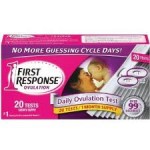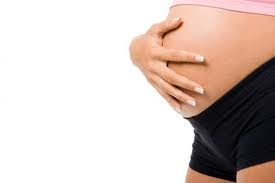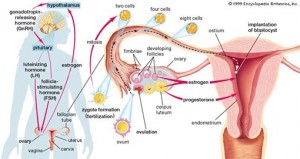It can work out that you just get pregnant without any ovulation prediction methods, but in order to get pregnant faster most couples need to focus more and find out the very best times to have intercourse in order to speed up the process. Knowing your date of ovulation and getting pregnant more quickly go hand in hand. Ovulation test kits are very beneficial to determine when you’re ovulating. We’ll discuss these as well as other ovulation detector methods.
First, let’s discuss what ovulation is.
“What is ovulation?”
Ovulation is the period of the menstrual cycle when the mature egg is released from its follicle in the ovary. This happens about midway (day 14 of a 28-day cycle) through the menstrual cycle, but varies from woman to woman, especially those with irregular cycles.
“Do you have irregular cycles? How can you know?”
Well, the best way to tell if you have irregular cycles is to begin to track your cycles. The more tools you use to track your monthly cycles, the better you will be at determining ovulation date. This is absolutely crucial to timing baby-making sex, especially if you ovulate irregularly.
How does ovulation determine when I can get pregnant?
To be fruitful and multiply, you must have sexual intercourse during the period spanning one to two days before ovulation to about 24 hours afterward. The reason: Sperm cells can live for two or three days, but an egg survives no more than 24 hours after ovulation — unless, of course, fertilization occurs.
If you have sex near the time of ovulation, you’ll increase your chances of getting pregnant. And you’ll be happy to know that the odds are with you: In normally fertile couples, there is a 20 percent chance of getting pregnant each cycle. About 85 percent of women who have sex without using birth control will get pregnant within one year. You can try to boost your likelihood of getting pregnant by learning to pinpoint exactly when you ovulate and by familiarizing yourself with the cyclic hormonal and physical changes that take place in your body each month. You can also use this knowledge to attempt birth control by avoiding intercourse near the time of ovulation. However, this is not the best form of birth control and it can easily fail.
“But when is ovulation? When does ovulation occur?”
One of the common methods to track your cycles by using a basal thermometer. This thermometer is different from the regular thermometer used to determine a fever. A basal thermometer is an ultra-sensitive thermometer that tracks your body’s most minute temperature shift and helps you calculate ovulation. Following ovulation, your temperature can increase by 0.4 to 1.0 degrees. This temperature spike indicates that you’ve ovulated, because releasing an egg stimulates the production of the hormone progesterone, which raises body temperature.
You’re most fertile in the two or three days before your temperature hits its high point. A few experts think you may have an additional 12- to 24-hour window of fertility after you first notice the temperature creep up, but most say that at that point, it’s too late to make a baby.
“It can take one to two days after ovulation for progesterone to build up enough to raise your body temperature. But since the egg can only survive for about 24 hours, at that point, it’s too late for fertilization,” says Tracy Telles, an ob-gyn at the Permanente Medical Group in Walnut Creek, California. That’s why experts recommend that you chart your temperature by taking it each morning for a few months to detect a pattern and pinpoint your likely ovulatory date. Then you can plan to have sex during the two to three days preceding the day your temperature normally rises.
 Another means for determining ovulation date is an ovulation prediction kit (OPK) . There are two kinds – the urine strips and also the saliva microscopes. The strips are like a pregnancy test stick, only they measure LH (or luteinizing hormone) instead of HCG (the pregnancy hormone). These are both GREAT ways to help you calculate date of ovulation. Available at drugstores and grocery stores without a prescription, ovulation predictor kits detect the surge in luteinizing hormone (LH) in your urine just before ovulation. They’re easier to use and often more accurate than the BBT method, and they can predict ovulation 12 to 36 hours in advance and help you maximize your chance of conception the very first month you use them.
Another means for determining ovulation date is an ovulation prediction kit (OPK) . There are two kinds – the urine strips and also the saliva microscopes. The strips are like a pregnancy test stick, only they measure LH (or luteinizing hormone) instead of HCG (the pregnancy hormone). These are both GREAT ways to help you calculate date of ovulation. Available at drugstores and grocery stores without a prescription, ovulation predictor kits detect the surge in luteinizing hormone (LH) in your urine just before ovulation. They’re easier to use and often more accurate than the BBT method, and they can predict ovulation 12 to 36 hours in advance and help you maximize your chance of conception the very first month you use them.
But they’re not foolproof. Rarely, they can measure LH (you get either a positive or a negative result, not a number), but can’t indicate whether you ovulate after a positive response; LH can surge with or without the release of an egg. False LH surges can also take place before the real one.


